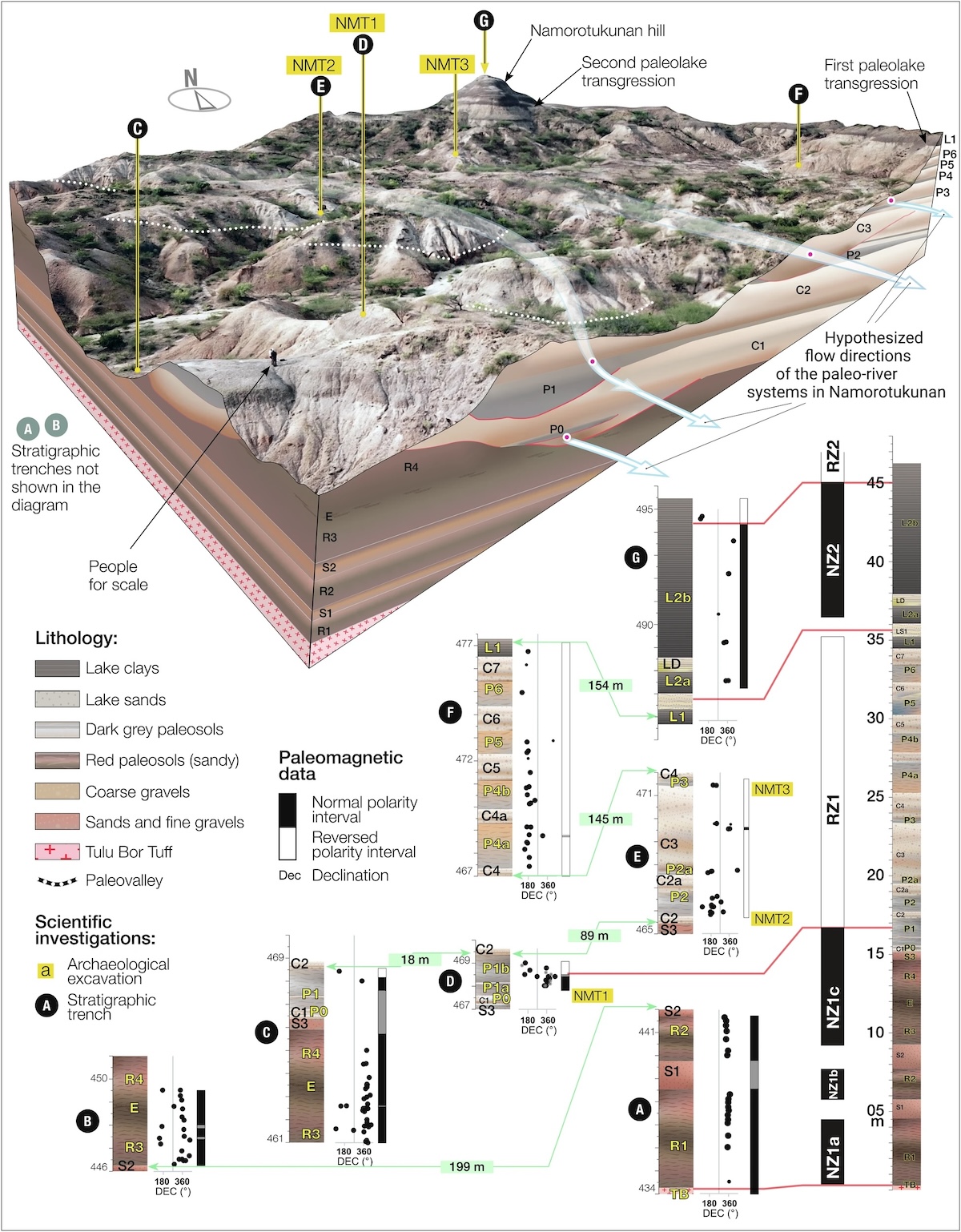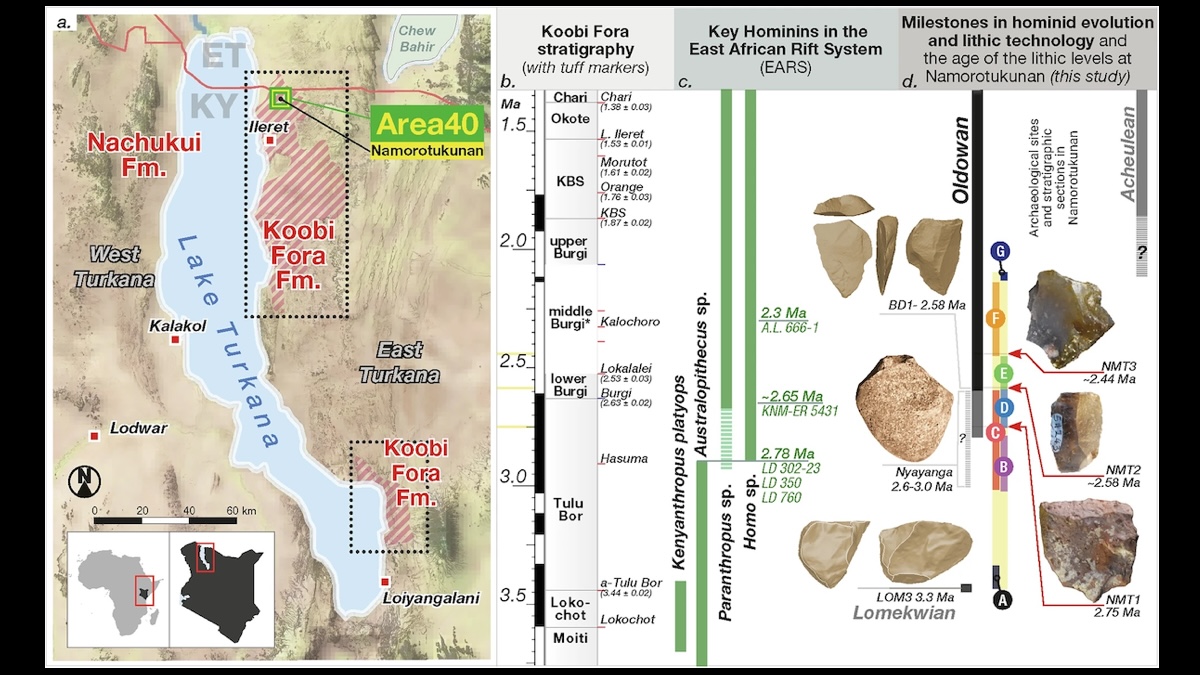Stone tool discovery suggests very first humans were inventors – BBC News
The very first humans millions of years ago may have been inventors, according to a discovery in northwest Kenya. Researchers have found that the primitive humans who lived 2.75 million years ago at an archaeological site called Namorotukunan used stone tools continuously for 300,000 years. Evidence previously suggested that early human tool use was sporadic: randomly developed and quickly forgotten. The Namorotukunan find is the first to show that the technology was passed down through thousands of generations.
Early Oldowan technology thrived during Pliocene environmental change in the Turkana Basin, Kenya – Nature
Abstract
Approximately 2.75 million years ago, the Turkana Basin in Kenya experienced environmental changes, including increased aridity and environmental variability. Namorotukunan is a newly discovered archaeological site which provides a window into hominin behavioral adaptations. This site lies within the upper Tulu Bor and lower Burgi members of the Koobi Fora Formation (Marsabit District, Kenya), presently a poorly understood time interval due to large-scale erosional events. Moreover, this locale represents the earliest known evidence of Oldowan technology within the Koobi Fora Formation. Oldowan sites, older than 2.6 million years ago, are rare, and these typically represent insights from narrow windows of time. In contrast, Namorotukunan provides evidence of tool-making behaviors spanning hundreds of thousands of years, offering a unique temporal perspective on technological stability. The site comprises three distinct archaeological horizons spanning approximately 300,000 years (2.75 − 2.44 Ma). Our findings suggest continuity in tool-making practices over time, with evidence of systematic selection of rock types. Geological descriptions and chronological data, provide robust age control and contextualize the archaeological finds. We employ multiple paleoenvironmental proxies, to reconstruct past ecological conditions. Our study highlights the interplay between environmental shifts and technological innovations, shedding light on pivotal factors in the trajectory of human evolution.
Fig. 2: Simplified geology (upper part of the figure), paleoriver network, and the location of archeological sites.



